America’s First Cuisines, Sophie D. Coe
Did you ever wonder what they ate in Mexico before the Spanish arrived? You probably know about corn and beans and squash. You may also know about tomatoes and peppers. But there was much, much more and San Miguel chefs Jose Bossuet and Julian Garcia will be paying tribute to the culinary origins of our country in a special dinner to be served at Chef Bossuet’s Cafe Contento on February 24.
Chef Julian sent me a preliminary copy of the menu for Mexico Ancestral, a celebration of Cocina Prehispanica. The dinner will feature six courses. As someone who enjoys history and especially the history of Mexico, I thought I’d share a few things I know about the ingredients and the dishes.
Now, even at the lavish banquets enjoyed by Moctezuma or Ahuitzotl or Cuitlahuac or Itzcoatl or any of the other pre-Colonial emperors of Mexico whose names I remember (but whose spelling I have to look up), you would have seldom found all of these dishes at a single meal. Some of them were seasonal. Some of them were regional. So the chefs have chosen dishes that represent various regions across the country and will be most enjoyed by a 21st Century palate.
The list includes the name of the dish in Nahuatl and what it’s best known as today.
First Course
AZCATL MOLLI, TLAXKALLI
Escamoles de Hidalgo
With very little domestication of animals, the Aztec diet was primarily vegetarian. But there was one category of food they ate that has a higher protein content than meat. And it’s still considered a delicacy in parts of Mexico today. I’m talking about…and I can see you screwing up your face…insects.
Last time I had a dinner cooked by chefs Bossuet and Garcia, there were chapulines. This time, there’ll be escamoles. I always think they sound much more appetizing with their Spanish names. But if I said last time there were grasshoppers and this time there’ll be ant eggs, I can imagine a few turned up noses.
All I can say about escamoles is they taste like nuts and butter. And like the Aztecs, I like nuts and butter.
Second Course
MICHZACUANI, NOPALLI
Charales y nopales
Almost everyone who’s lived in San Miguel de Allende for a few years has made the trip to Patzcuaro. And if you’ve done the trip to the town, you’ve probably also done the trip to the island on the lake. And there you’ve probably seen the charales, the little, sardine like fish, a couple of inches long, that locals eat dried and salted and sometimes with lime and chilis.
Lake Patzcuaro is pretty much fished out these days but the local fishing industry dates back long before the arrival of the Spaniards.
The charales will be served with another documented food of the Aztecs, nopales, the paddles of the most prominent cactus in Mexico.
Third Course
AXOLMICHAYOTL
Caldo largo
For their soup, the chefs have chosen a freshwater fish with origins in the state of Guanajuato.
The primary ingredient, catfish, is still abundant in many local lakes and the chefs’ choice of secondary ingredients also highlights local products including guajillo chilis, xoconostle (the cactus fruit you might better know as prickly pear) and epazote.
Fourth Course
ACACHATL TAMALLI
Crayfish tamal
Before the arrival of the Spanish, the Aztecs ate tamales stuffed with turkey, flamingo, frog, gopher, rabbit, fish, turkey eggs, honey, fruits, squash, beans and the freshwater crustaceans that will go into the February 24 dinner.
The tamales will be stuffed with acocils, a small and abundant crayfish that the Aztecs harvested out of Texcoco, the lake upon which Mexico City was built. To the Aztecs, crayfish were one of the most important sources of nutrition. To me, they’re one of the most important sources of great taste.
Fifth Course
TOCHTLI, OKTLI, TLILCHILI
Rabbit in pulque and pasilla
There’s a town in Michoacan called Tuxpan that’s name derives from the Nahuatl language of the Aztecs and means place of rabbits. It’s thought that at one time, centuries ago, there was even considered to be an epidemic of rabbits in Central Mexico.
Chefs Garcia and Bossuet will be serving their rabbit dish in a sauce of pulque and pasilla peppers.
Pasillas are dried poblano peppers, the peppers used in one of Mexico’s most popular dishes, chile relleno.
Pulque is the fermented sap of the maguey plant which was considered one of the most sacred plants of ancient Mexico, with appearances in mythology, religious rituals and some of the art that has survived from as early as 200 AD.
Sixth Course
HUAHUTLI, ATOLLI
Amaranth and atole
I’ve seen amaranth growing all around the hills surrounding San Miguel yet it took 500 years after the Spaniards arrived to become trendy. I find the reason why quite fascinating.
To convert the Aztecs from what they considered paganism, the Roman Catholic friars banned the cultivation of the grain as it was often shaped into idols. Though it thrived in the wild, a native crop was virtually forgotten.
Chefs Bossuet and Garcia will be combing amaranth with atole, the Aztec drink that made up a large part of their calorie intake. The standard recipe for atole is eight parts water and six parts corn. I suspect something else will be added to make dessert a little more exciting.
Mexico Ancestral will be held at Cafe Contento, Hernandez Macias 72, in San Miguel de Allende, Mexico, at 6:30 pm, on Wednesday, February 24. The price of $740 includes wine and Mezcal pairings. For reservations, telephone 415 154 8020.

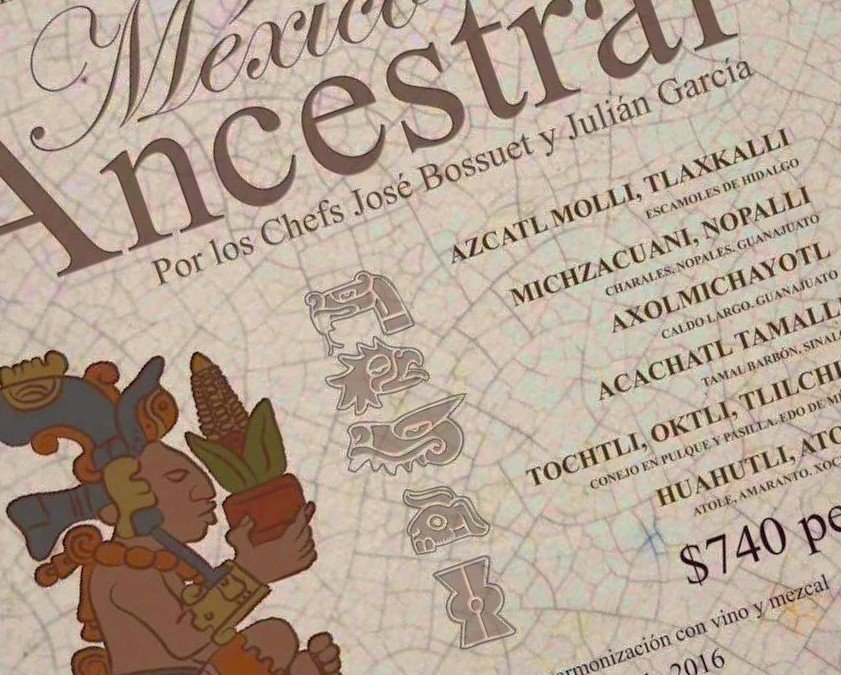
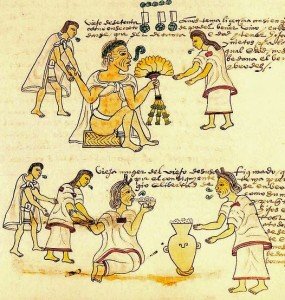
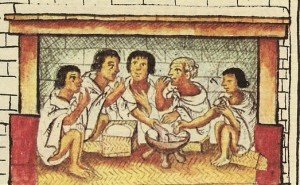

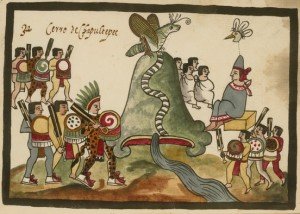
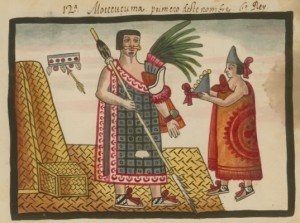
This sounds fantastic . I hope you have more of these wonderful feasts scheduled for April and beyond. I look forward to partaking! !